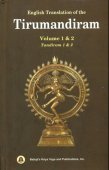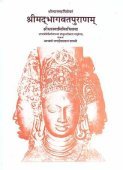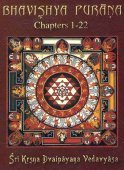Ashtangayoga, Ashtanga-yoga, Aṣṭāṅgayoga, Ashtamgayoga: 10 definitions
Introduction:
Ashtangayoga means something in Hinduism, Sanskrit, Marathi. If you want to know the exact meaning, history, etymology or English translation of this term then check out the descriptions on this page. Add your comment or reference to a book if you want to contribute to this summary article.
The Sanskrit term Aṣṭāṅgayoga can be transliterated into English as Astangayoga or Ashtangayoga, using the IAST transliteration scheme (?).
In Hinduism
Purana and Itihasa (epic history)
Source: archive.org: Puranic EncyclopediaAṣṭāṅgayoga (अष्टाङ्गयोग).—Yama, Niyama, Āsana, Prāṇāyāma, Pratyāhāra, Dhyāna, Dhāraṇā and Samādhi. Yama. That which prevents the yogīs from doing prohibited things. Ahiṃsā, Satya, Asteya, Brahmacarya and Aparigraha are yamas. (See full article at Story of Aṣṭāṅgayoga from the Puranic encyclopaedia by Vettam Mani)
Source: Cologne Digital Sanskrit Dictionaries: The Purana IndexAṣṭāṅgayoga (अष्टाङ्गयोग).—Consists of āsana, prāṇarodha, pratyāhāra, dhāraṇā, dhyāna, samādhi, together with yamas and niyamas.*
- * Viṣṇu-purāṇa 104. 24-25.

The Purana (पुराण, purāṇas) refers to Sanskrit literature preserving ancient India’s vast cultural history, including historical legends, religious ceremonies, various arts and sciences. The eighteen mahapuranas total over 400,000 shlokas (metrical couplets) and date to at least several centuries BCE.
Shaktism (Shakta philosophy)
Source: academia.edu: The Śāradātilakatantra on YogaAṣṭāṅgayoga (अष्टाङ्गयोग) is explained by Lakṣmaṇadeśika in his 11th-century Śaradātilaka as yoga consisting of eight limbs, listed as:
- yama,
- niyama,
- āsana,
- prāṇāyāma,
- pratyāhāra,
- dhāraṇā,
- dhyāna
- samādhi.
Thus they are identical with those found in the Yogasūtras of Patañjali (2.29). However, while the Yogasūtras list five yamas and five niyamas (2.30, 2.32), the Śaradātilaka lists ten each (7–9ab).

Shakta (शाक्त, śākta) or Shaktism (śāktism) represents a tradition of Hinduism where the Goddess (Devi) is revered and worshipped. Shakta literature includes a range of scriptures, including various Agamas and Tantras, although its roots may be traced back to the Vedas.
Vaishnavism (Vaishava dharma)
Source: Pure Bhakti: Bhagavad-gita (4th edition)Aṣṭāṅgayoga (अष्टाङ्गयोग) refers to “eightfold yoga process, consisting of yama (control of the mind and senses), niyama (following rules and regulations of yoga practice), āsana (bodily postures), prānāyama (breath control), pratyāhāra (withdrawal of the mind from sensory perception), dhāraṇā (steadying the mind), dhyāna (meditation) and samādhi (trance)”. (cf. Glossary page from Śrīmad-Bhagavad-Gītā).
Source: Pure Bhakti: Bhajana-rahasya - 2nd EditionAṣṭāṅgayoga (अष्टाङ्गयोग) refers to:—The yoga system consisting of eight parts: yama (the process of controlling the senses), niyama (restrain of the senses), āsana (bodily postures), prāṇāyāma (breath control), pratyāhāra (withdrawal of the mind from sensory perception), dhāraṇā (steadying the mind), dhyāna (meditation) and samādhi (deep and unbroken absorption on the Lord in the heart). (cf. Glossary page from Bhajana-Rahasya).

Vaishnava (वैष्णव, vaiṣṇava) or vaishnavism (vaiṣṇavism) represents a tradition of Hinduism worshipping Vishnu as the supreme Lord. Similar to the Shaktism and Shaivism traditions, Vaishnavism also developed as an individual movement, famous for its exposition of the dashavatara (‘ten avatars of Vishnu’).
Yoga (school of philosophy)
Source: archive.org: Yoga Aphorisms of Patanjali with Bhoja VrittiAṣṭāṅgayoga (अष्टाङ्गयोग) is the name of a work dealing with the Yoga system of Philosophy. It deals with—Meditation on eight particular parts of the body. By Śaṅkara Ācārya. B. G. 0. IV.
Source: ORA: Amanaska (king of all yogas): A Critical Edition and Annotated Translation by Jason BirchAṣṭāṅgayoga (अष्टाङ्गयोग) refers to the “eight auxiliaries (of Haṭhayoga)”, according to the Śivayogadīpikā, an ancient Sanskrit text dealing with Yoga possibly corresponding to the Śivayoga quoted in Śivānanda’s Yogacintāmaṇi.—Accordingly, [while describing a sequence of Haṭhayoga practices]: “Thus, by means of this Haṭhayoga which has eight auxiliaries (aṣṭāṅgayoga), those [students who are] life-long celibates (naiṣṭhika) obtain the Siddhis of the [best of Sages] because of their untiring practice. Listen to [my account of] them. In the first year, [the celibate] becomes free of disease and much loved by all people and, in the second year, he then [gains] great eloquence and can write poetry. [...]”.

Yoga is originally considered a branch of Hindu philosophy (astika), but both ancient and modern Yoga combine the physical, mental and spiritual. Yoga teaches various physical techniques also known as āsanas (postures), used for various purposes (eg., meditation, contemplation, relaxation).
Languages of India and abroad
Marathi-English dictionary
Source: DDSA: The Molesworth Marathi and English Dictionaryaṣṭāṅgayōga (अष्टांगयोग).—m S Yoga or Austere devotion in its eight branches or modes. See the eight under aṣṭavidhasamādhi. Ex. aṣṭāṅgayōgābhyāsēṃ || citta nirmaḷa hōya āpaisēṃ ||
Marathi is an Indo-European language having over 70 million native speakers people in (predominantly) Maharashtra India. Marathi, like many other Indo-Aryan languages, evolved from early forms of Prakrit, which itself is a subset of Sanskrit, one of the most ancient languages of the world.
Sanskrit dictionary
Source: Cologne Digital Sanskrit Dictionaries: Aufrecht Catalogus Catalogorum1) Aṣṭāṅgayoga (अष्टाङ्गयोग) as mentioned in Aufrecht’s Catalogus Catalogorum:—yoga. Bik. 566. Burnell. 112^b. Aṣṭāṅgayogaśāstre Gāyatrīsaṃkalpa. P. 12.
2) Aṣṭāṅgayoga (अष्टाङ्गयोग):—by Śaṅkarācārya. B. 4, 2.
3) Aṣṭāṅgayoga (अष्टाङ्गयोग):—read Aṣṭāṅgayogaśāstre Japāgāyatrīsaṃkalpa.
Source: Cologne Digital Sanskrit Dictionaries: Monier-Williams Sanskrit-English DictionaryAṣṭāṅgayoga (अष्टाङ्गयोग):—[=aṣṭāṅga-yoga] [from aṣṭāṅga > aṣṭa > aṣṭan] m. the eightfold Yoga (consisting of yama, niyama, āsana, prāṇāyāma, pratyāhāra, dhyāna, dhāraṇa, and samādhi, qq.vv.), [Upaniṣad]
Sanskrit, also spelled संस्कृतम् (saṃskṛtam), is an ancient language of India commonly seen as the grandmother of the Indo-European language family (even English!). Closely allied with Prakrit and Pali, Sanskrit is more exhaustive in both grammar and terms and has the most extensive collection of literature in the world, greatly surpassing its sister-languages Greek and Latin.
Kannada-English dictionary
Source: Alar: Kannada-English corpusAṣṭāṃgayōga (ಅಷ್ಟಾಂಗಯೋಗ):—[noun] the eightfold path of training one’s body and mind for the sake of liberation according to Patanjali's system.
Kannada is a Dravidian language (as opposed to the Indo-European language family) mainly spoken in the southwestern region of India.
See also (Relevant definitions)
Partial matches: Yoga, Ashtanga.
Full-text (+50): Pratyahara, Hathapradipikatika, Ashtanga Yoga, Niyama, Attankayokam, Dhyana, Dharana, Pranayama, Udanavayu, Anilayama, Vyanavayu, Yoga, Viniyoga, Hathayoga, Krityakritya, Yogopaya, Nirupana, Siddhikrama, Samadhyabhyasa, Sequence.
Relevant text
Search found 36 books and stories containing Ashtangayoga, Ashtamgayoga, Ashtanga-yoga, Aṣṭāṃgayōga, Astamgayoga, Aṣṭāṅga-yoga, Aṣṭāṅga-yōga, Astanga-yoga, Astangayoga, Aṣṭāṅgayoga, Aṣṭāṅgayōga; (plurals include: Ashtangayogas, Ashtamgayogas, yogas, Aṣṭāṃgayōgas, Astamgayogas, yōgas, Astangayogas, Aṣṭāṅgayogas, Aṣṭāṅgayōgas). You can also click to the full overview containing English textual excerpts. Below are direct links for the most relevant articles:
Bhajana-Rahasya (by Srila Bhaktivinoda Thakura Mahasaya)
Text 13 < [Chapter 1 - Prathama-yāma-sādhana (Niśānta-bhajana–śraddhā)]
Text 9 < [Chapter 2 - Dvitīya-yāma-sādhana (Prātaḥ-kālīya-bhajana)]
Text 3 < [Chapter 3 - Tṛtīya-yāma-sādhana (Pūrvāhna-kālīya-bhajana–niṣṭhā-bhajana)]
Jainism and Patanjali Yoga (Comparative Study) (by Deepak bagadia)
Part 6 - Survey of previous research (Literature Review) < [Chapter 1 - Introduction]
Part 4.4 - Yogic techniques for control of Vrttis (1): Kriyayoga < [Chapter 2 - Yoga philosophy and practices]
Part 7 - Patanjali’s Ashtanga Yoga compared to Jainism < [Chapter 4 - A Comparative Study]
Shrimad Bhagavad-gita (by Narayana Gosvami)
Verse 4.28 < [Chapter 4 - Jñāna-Yoga (Yoga through Transcendental Knowledge)]
Verses 5.27-28 < [Chapter 5 - Karma-sannyāsa-yoga (Yoga through Renunciation of Action)]
Verse 13.25 < [Chapter 13 - Prakṛti-puruṣa-vibhāga-yoga]
Hari-bhakti-kalpa-latikā (by Sarasvati Thkura)
Yoga-sutras (Ancient and Modern Interpretations) (by Makarand Gopal Newalkar)
Sūtra 2.28 [Aṣṭāṅgayoga] < [Book II - Sādhana-pāda]
Sūtra 2.45 < [Book II - Sādhana-pāda]
Part 3 - Gist of four Pādas of Pātañjala Yogadarśana < [Conclusion]
A History of Indian Philosophy Volume 3 (by Surendranath Dasgupta)
Part 1 - The Aḻagiyas from Nāthamuni to Rāmānuja < [Chapter XVIII - An Historical and Literary Survey of the Viśiṣṭādvaita School of Thought]
Part 3 - The Pañcarātra Literature < [Chapter XVI - The Pañcarātra]
Related products



